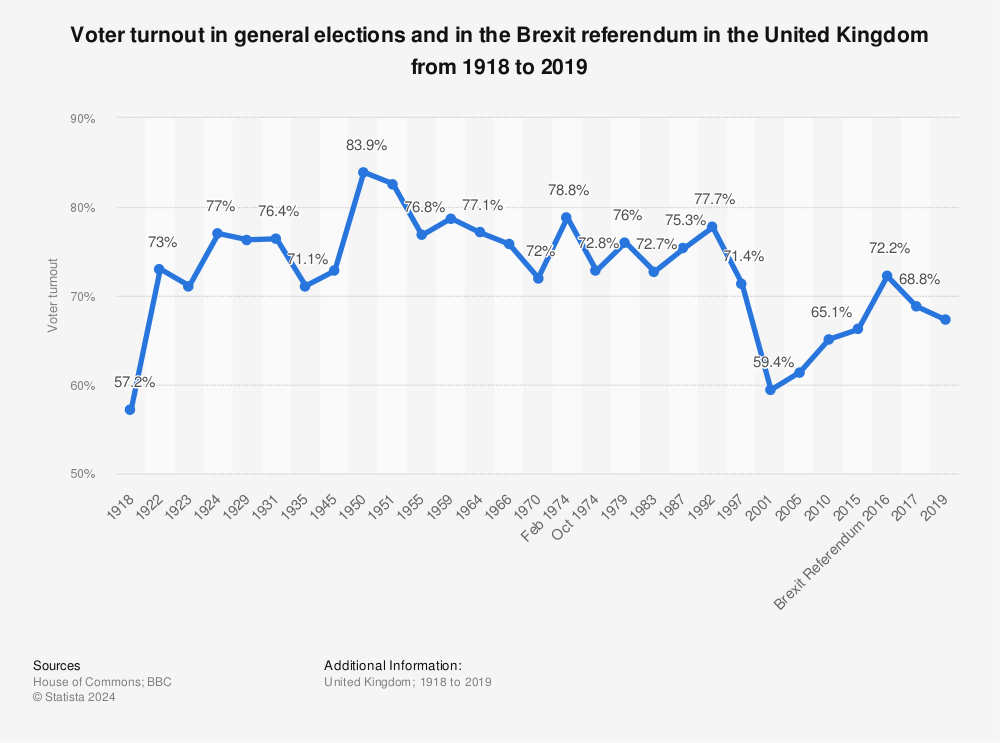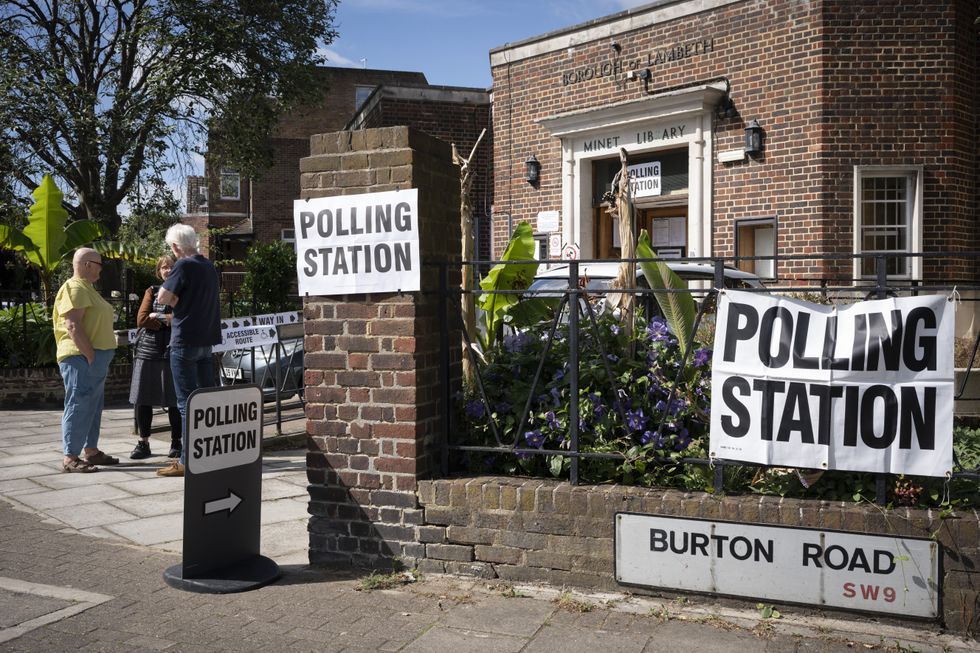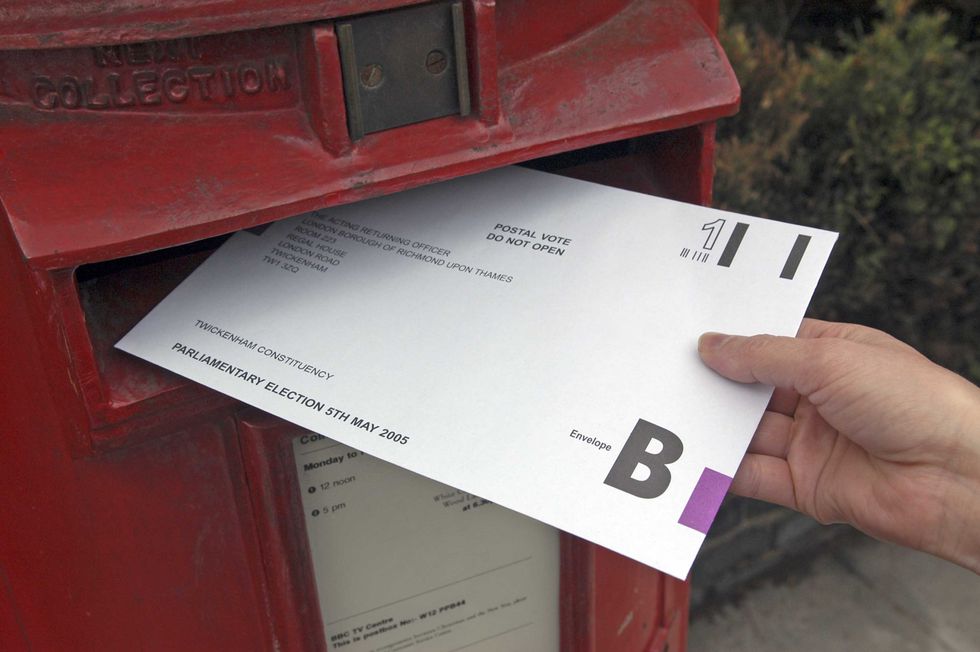Keir Starmer has become the new prime minister with a large Labour majority
Getty, Statista
Overall turnout for the general election was estimated at 60 per cent down from 67.3 per cent in 2019
Don't Miss
Most Read
Trending on GB News
The turnout for this year's general election was the lowest since 2001 with an estimated 60 per cent of the population casting their ballot.
This is a sharp decrease from 67.3 per cent in the last general election in 2019.
The 60 per cent turnout rate at this year's election is the worst turnout since Prime Minister Tony Blair was re-elected for a second term in 2001 when the figure fell to 59.4 per cent.
Since 2001, the voter turnout has gradually recovered and reached 72.2 per cent in the Brexit Referendum in 2016, according to Statista.
Between 1922 and 1997 voter turnout never fell below 70 percent and in 1950 the peak was recorded at 83.9 per cent.
Below we examine the five main factors contributing to this year's low turnout.

Find more statistics at Statista
1. Photo ID Laws
Photo ID laws could have prevented more than 400,000 people from voting in this year's election, according to polls.
A survey by More In Common found that of 2,047 people 3.2 per cent reported being turned away at least once because they lacked the necessary ID.
Reflected across the UK, this would equate to more than 850,000 people unable to vote.
Out of those surveyed, over half said they did not return or they came back and were still unable to vote - estimating around 425,000 people.
July 4 was the first time that everyone in the UK voting in person was required to show ID before receiving a ballot paper.
Passports, driving licences and blue badges were among the permitted forms of ID but not all types of photo ID were accepted.
The pollsters found that a third of people turned away had ID but it was not on the list of Valid ID, another quarter said the name on their ID was different from the one listed on the electoral register and 12 per cent said they were told the picture on the ID did not match their appearance.
Data from the Hope Not Hate campaign group suggested that the data had a disproportionate impact on ethnic minorities who were twice as likely to be turned away than white voters.
They found 6.5 per cent of voters of colour were turned away compared to 2.5 per cent of white voters.
2. Opinion polls indicating Labour victory
For months leading up to the general election, opinion polls indicated a huge Labour victory on the cards.
Some experts have argued that this may have dissuaded voters from deciding to turn out as it seemed the election result was already determined.
Professor Sir John Curtice, a polling expert said that "the conditions that facilitate a low turnout are in place".
He explained: "It’s what you would expect in an election in which the polls were suggesting it’s pretty clear who was going to win and where there wasn’t that much difference despite both parties’ denials – not that much difference between Conservative and Labour in much of what they were offering the electorate."
3. Political disillusionment and apathy
Others have pointed to the widespread disillusionment with the state of British politics as another factor contributing to low turnout.
Disillusion and apathy refer to the extent to which individuals increasingly become disengaged with politics.
Luke Tryl from the campaigning group More in Common, said that a lack of belief in political parties to fix existing problems in Britain is at the heart of voter cynicism and apathy.
He said: "The big question is does the time for mood change mean more people want to go out and cast their vote or does the pervasive sense of apathy and cynicism mean more people decide not to bother?
“What’s certainly true from our focus group conversations is very few people are confident that whoever wins can fix the challenges facing ‘broken’ Britain.”
Leading pollster Robert Hayward, also said: "I have felt that we may have a record low turnout because it is clear that a lot of voters look politically homeless."
4. Young Voters
Among Generation Z and millennials, 38 per cent decided not to vote, which is almost double the national average.
Furthermore, according to Techne, 30 per cent of 18 to 34-year-olds are not registered to vote.
Apathy was particularly high among young voters who believed that their problems had not been addressed by major parties.
The National Centre for Social Research found that only one in ten of eight to 17-year-olds believe that politicians prioritise the needs of young people.
Another reason for a low turnout amongst young people is the structural barriers that young people must navigate to vote.
Karen Turner from Vox explained that while most older people have stable ways of life, young people are more fluid.
Time constraints like work and university affect younger people with unpredictable schedules and are often in a different location from where they grew up.
Young people move around a lot, change schools and study abroad meaning they often don't know where they will be three months in the future, according to Turner.

38 per cent of Gen Z and millennials decided not to vote at this year's election
Getty
LATEST NEWS:
- Hotel owner fears for family's safety after threats to destroy his business - because critics don't like GB News
- 'I earn very little interest on my pension - how can I boost my savings?' Jasmine Birtles replies
- Mark Dolan shares 'best thing' about living in Britain as he describes his 'perfect day'

Voters complained about their postal votes being delayed resulting in thousands of people being unable to vote
Getty
5. Delayed postal votes
Leading up to the general election, voters complained about delays or problems receiving their postal vote leading to thousands of people being unable to vote on July 4.
As many as 120 constituencies reported delivery delays as the postal voting system struggled to cope with the increased demand.
Voters said their postmen told them their ballots were delayed as they were instructed to prioritise parcels, however, the Royal Mail denied this.
Tory candidate Ameet Jogia, who was defeated by just 15 votes is considering taking legal action over the alleged postal vote delays in his constituency.
Jogia said that Barnet council were responsible for the delays that "lost me the vote."
A Barnet Council spokesperson said: “We are confident all aspects of the election were run in accordance with electoral legislation and the high standards set by the Electoral Commission.”
A Local Government Association spokesperson also said: “Councils and electoral staff across the country have been doing their utmost to ensure the smooth running of this election and that people can vote.
“People voting by post are expected to have increased 20 per cent since 2019, with more than 1.3 million postal vote applications made between 22 May and 19 June. This unprecedented increase adds more pressure to an already complex process and overburdened system.
“We are aware of reports of incidents where delays have happened. The postal vote system could benefit from review and more could be done to support Royal Mail and printers to be ready to deliver elections.”
A Royal Mail spokesperson said: "We have a specialist elections team that plans every aspect of the elections delivery programmes and works closely with local authorities to ensure everything runs as smoothly as possible.
“We have delivered more postal votes and candidate mail than ever before and we are proud of the role we play in the democratic process.
"There is no backlog in our network. We remain confident that postal votes handed to us on time have been delivered in time for polling day.”
An ElectoralCommission spokesperson: “At all elections, the timetable allows only a short window of time for administrators to prepare and dispatch postalvotes. That means it can be particularly difficult for overseas voters to receive and return their postalvote in time.
“We have made recommendations to the UK Government in the past about how to improve the experience for overseas voters. We will be gathering evidence after this poll, and will put forward further suggestions as appropriate.”








